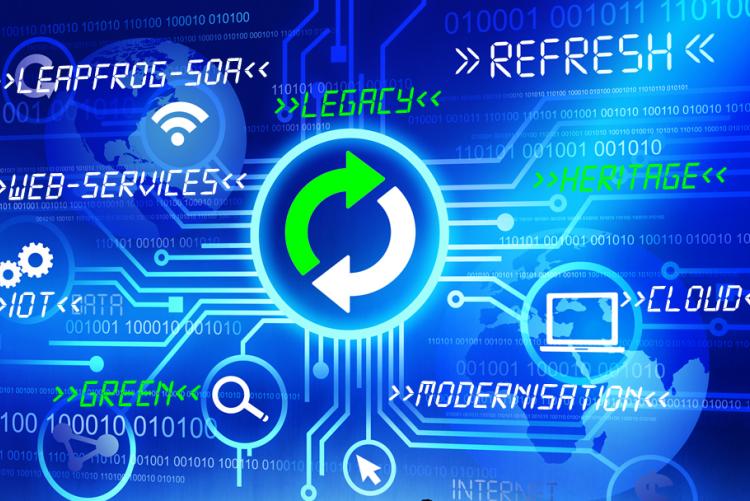Bringing Legacy Assets to the Digital Table with ‘Leapfrog SOA’
Service-Oriented Architecture (SOA) was the hottest thing going in enterprise IT a decade ago, until the cloud took off and stole all of its thunder. Nevertheless, SOA – and its requisite services – are still around, and still provide value to the enterprises that struggled to get the approach up and running.
SOA, in fact, had two core value propositions, strategic and tactical. Strategically, SOA promised greater business agility, as the approach would lead to more flexible, reusable services that would meet changing business needs. It succeeded with this strategic goal to a limited extent, but far less than implementing organizations might have hoped.
SOA’s tactical value proposition, however, was far more successful: exposing a range of legacy assets as loosely coupled services in order to facilitate and streamline the integration of those services into modern applications and processes.
Today, the IT landscape has completely changed since the heyday of SOA. Not only has the cloud matured, but digital transformation priorities are forcing enterprises to rethink their user touchpoints and how end-to-end technology capabilities meet shifting customer demands – often in real-time.
Incorporating legacy application and data assets – whether they be from mainframe, iSeries, Unix, VMS, Multivalue, or other systems and platforms – is still an essential part of modern digital efforts for any enterprise that still runs such systems.
The challenge for such enterprises is not so much migrating off such systems (although retiring aging legacy is occasionally a priority), but rather bringing such systems into the modern, digital, DevOps-centric world – quickly and cost-effectively.
Legacy vs. Leapfrog
The good news: SOA can help – and not only that, it can help in two different ways.
If you have SOA in place from the 2000s, what today we might call ‘legacy SOA,’ then the services your team so painstakingly built on the Enterprise Service Bus (ESB) back in the day still provide value, as modern, often cloud-based integration platforms can easily consume SOAP-based Web Services as well as RESTful services.
However, even if you don’t have legacy SOA in place, or if the SOA you do have doesn’t expose the legacy data and application assets current needs require, SOA can still be an important part of incorporating legacy assets in modern digital initiatives.
You can think of this approach as ‘leapfrog SOA,’ as it doesn’t require a new ESB or purchasing any other traditional, on-premises middleware that was characteristic of legacy SOA.
The secret to leapfrog SOA is to use a tool like the Jubilant Studio WS. This tool automatically generates RESTful (XML or JSON) Web Service interfaces for a variety of ‘green screen’ systems, including mainframes, midrange systems, and older Unix environments via Flynet’s sophisticated terminal emulation technology. It can also generate SOAP-based interfaces that support XML messages.
This tool essentially transforms the host environment into dynamic business systems components that you can incorporate directly into cloud-based or other digital environments – without the need for an ESB or other on-premises middleware. Of course, if you do have such middleware, Flynet Viewer Studio WS plugs into that as well.
For anyone who struggled to connect legacy systems to ESBs in the 2000s, the difference between the old way of making such integrations and Flynet’s approach is dramatic – especially when the legacy asset lacks a programmable interface.
Back in the say, such integrations took months to implement, and were tightly coupled and brittle. With Flynet, in contrast, developers can quickly connect host-based assets to existing middleware, cloud-based integration-as-a-service offerings like Dell Boomi, platform-as-a-service environments like Microsoft Azure or Oracle PaaS, or directly to APIs of cloud-based platforms like Salesforce and ServiceNow – often with little or no hand-coding.
The Intellyx Take
Given the importance of velocity to modern DevOps initiatives in particular as well as digital efforts overall, leapfrogging the legacy bottleneck is critically important enabler of rapid support of changing customer demands.
With Flynet, legacy integration can take as little as a few minutes, as opposed to the weeks or months it used to take in the heyday of SOA. Furthermore, Flynet helps organizations with existing investments in legacy technology transform those assets in the most cost-effective manner, or extend their useful life ahead of a planned migration.
In fact, leapfrog SOA gives IT executives flexibility to base their decisions regarding the short-term and long-term disposition of legacy assets on customer-driven business needs, and Flynet makes the vision of leapfrog SOA a reality.
Jason Bloomberg
Copyright © Intellyx LLC. Flynet and ServiceNow are Intellyx clients. At the time of writing, none of the other organizations mentioned in this article are Intellyx clients. Intellyx retains full editorial control over the content of this article. Image credit: Flynet.
About Jason Bloomberg
Jason Bloomberg is the leading industry analyst and globally recognized expert on agile digital transformation. He writes and speaks on how today’s disruptive enterprise technology trends support the digital professional’s business transformation goals.
He writes for Forbes, his biweekly newsletter the Cortex, and several contributed blogs. He also helps technology vendors and service providers communicate their digital transformation stories. His latest book is The Agile Architecture Revolution (Wiley, 2013).
Mr. Bloomberg has published over 750 articles, spoken at over 350 conferences, webinars, and other events, and has been quoted in the press over 1,500 times.

